Spring is that time of year when the air smells like things want to grow. But then a chilly wind shows up with a snow flurry and reminds you it’s not time for planting. For much of the Midwest, late winter and early spring were an unpredictable mess. A roller coaster of temperatures, record-shattering winds, power outages, and rain that was either torrential or gone in a flash. This resulted in winter greens often staying in pots far longer than normal (or appreciated).
But what does one plant in containers for seasonal color when the temperature is cool at night and warm during the day? April and May weather swings from one extreme to another, requiring plants to be tolerant of temperature drops, and able to be moved to a protected location or covered when necessary. With soils being cooler, growth will be slow, which also warrants starting with larger plants as well as considering artificial and dried materials to enhance the overall design.
Perk up your pansies with architectural stem cuttings
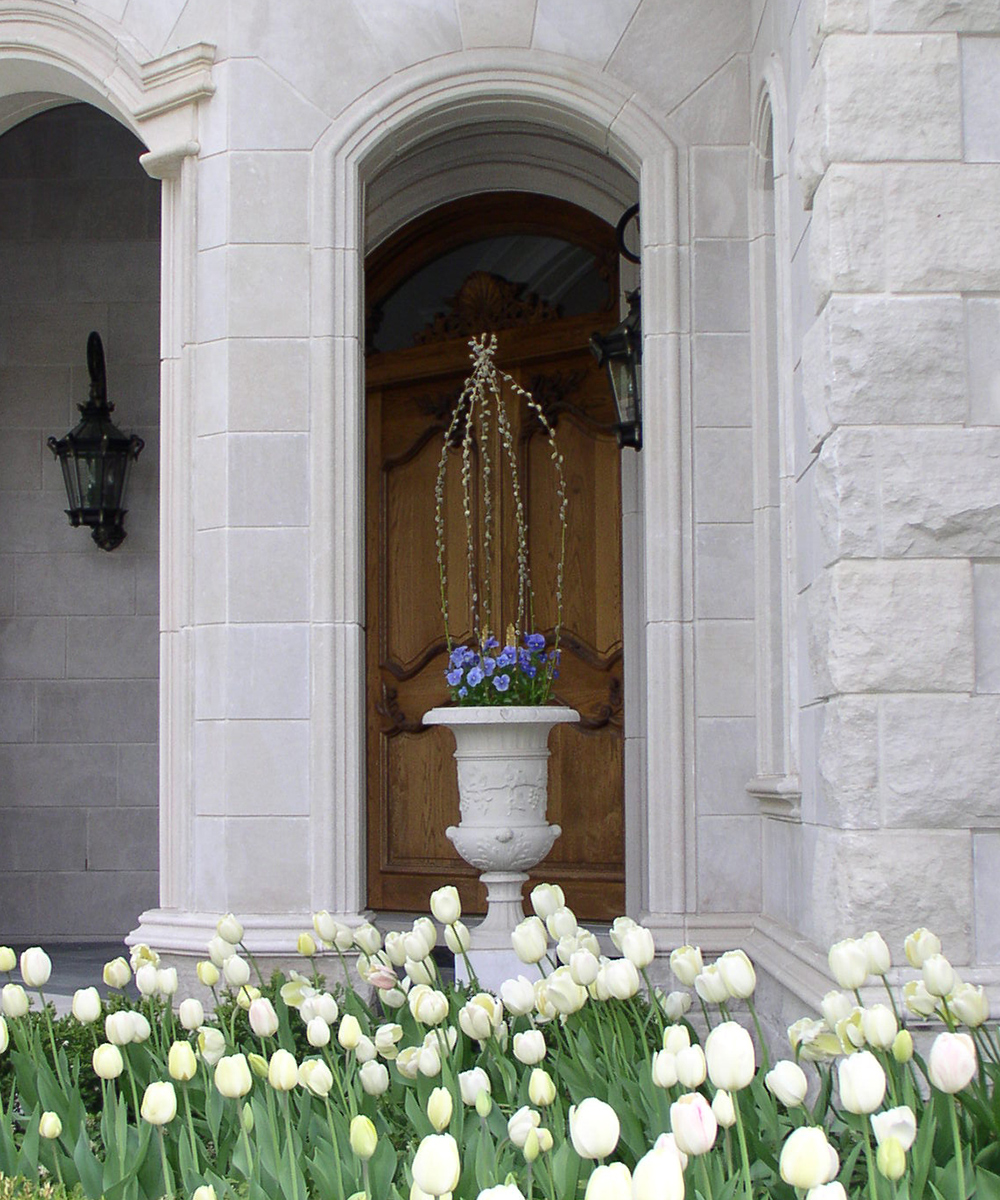
Pansies (Viola × wittrockiana, annual) are a common cold-hardy annual for spring and fall bedding and use in containers. While charming alone, they are even more delightful when paired with another plant element. Pussy willow (Salix discolor, Zones 4–9) stems can be used organically or gathered in a formal shape, creating a more sculptural appearance. Preferring a moist soil, you may find these growing wild where you can take some cuttings. If you have these in your garden, annual renovation pruning will yield an ample supply of branches for use in pots or forcing indoors. They are also typically available for purchase from your local florist or garden center. Yellow twig dogwood (Cornus sericea ‘Flaviramea’, Zones 3–8) is another shrub whose cut stems are splendid accents to pansies and other annuals in spring containers.

Pick plants that can transition into summer
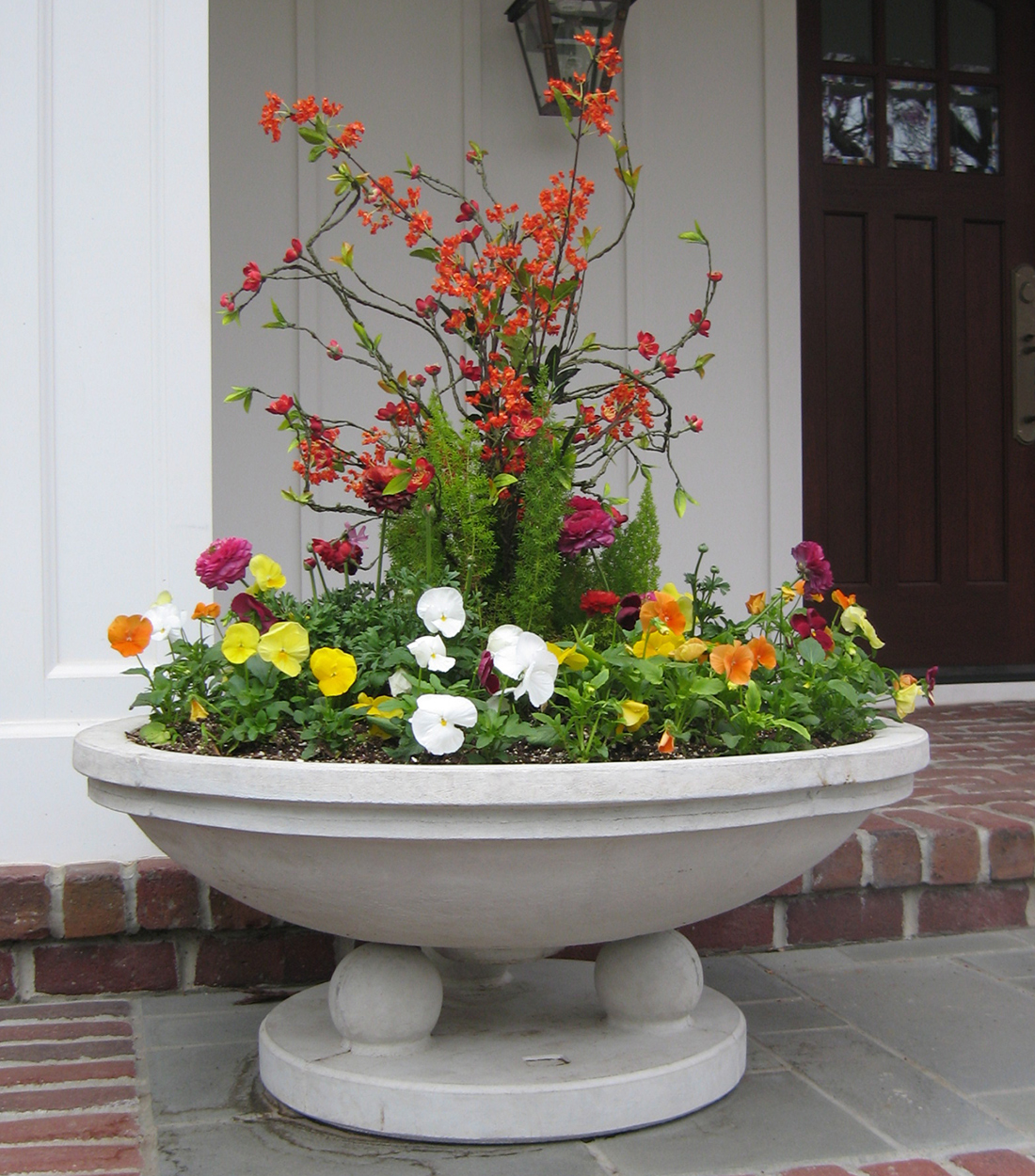
If you’re desperate for some more flowers and fresh foliage this time of year, mix pansies with ranunculus (Ranunculus asiaticus, annual), and foxtail fern (Asparagus densiflorus, annual) for a cottage garden–inspired spring display. For more height, artificial stems of flowering quince are added in the center, arranged in an irregular fashion to replicate their natural character. While all of these tolerate the cooler weather of spring, the foxtail fern and ranunculus are useful in summer displays as well. Be warned, the fern is toxic if eaten, so keep it away from curious children and pets that are inclined to chew on anything.
When flowers falter, foliage packs a punch
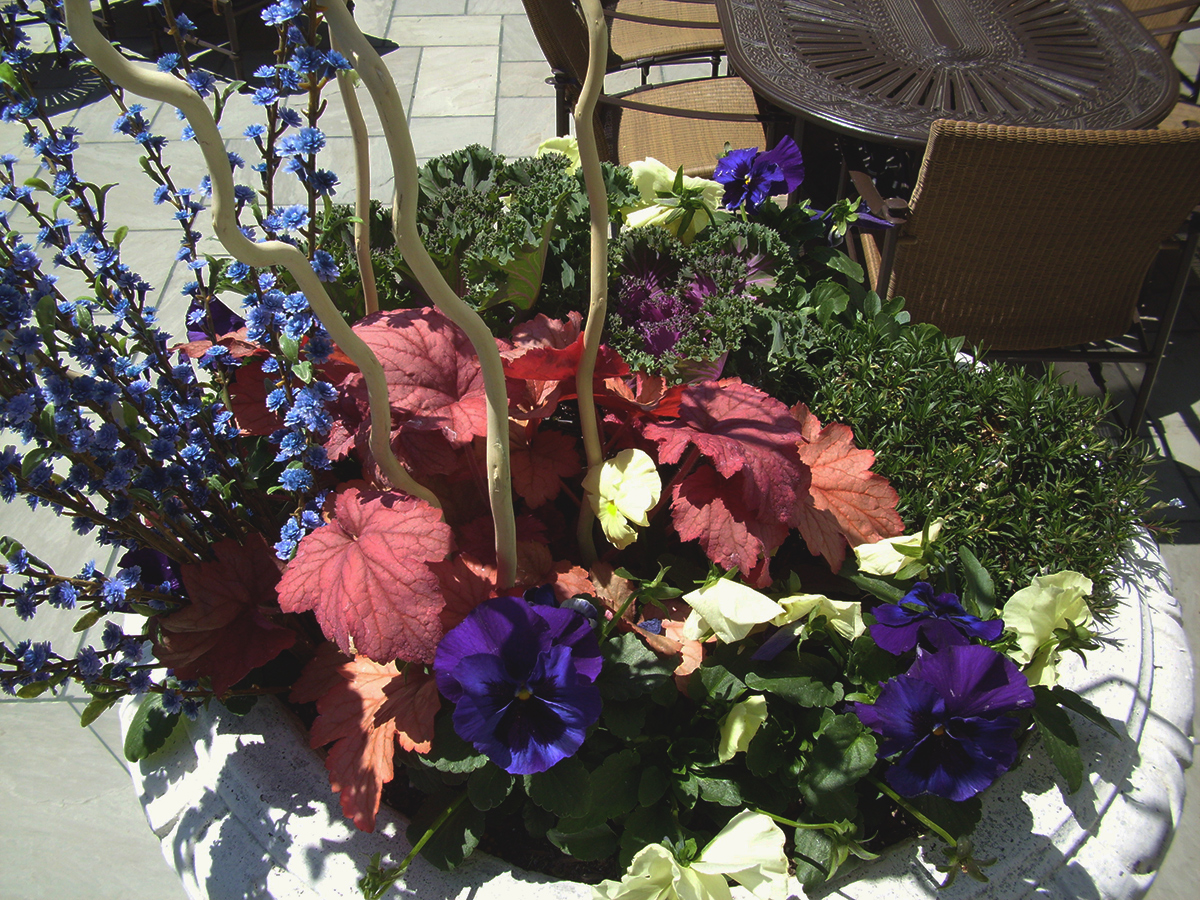
Bold and colorful foliage can make a significant difference in the success of your spring display when flowers are young and still small. Coral bells (Heuchera sanguinea, H. americana, H. micrantha, H. villosa, and H. cylindrica, Zones 4–9) are an herbaceous perennial known for the wide variety of sizes, shapes, and colors of its foliage. To get the most out of these foliage superstars, visit your local nursery early and get the best selection of cultivars to add to your garden. First plant them into your spring containers, and then transplant them into your landscape later. Mix with some fine textures such as creeping phlox (Phlox subulata, Zones 3–9) or cheddar pink (Dianthus gratianopolitanus, Zones 4–8). Both are mat-forming perennials that prefer well-drained soils and will cascade over the edge of the container. They can remain during the summer when the plants are changed over, or moved into the landscape where they will continue to grow for another season. Ornamental kale (Brassica oleracea, annual) is another foliage plant that works well as a bold accent, but consider using an edible, such as leaf lettuce, and enjoy a harvest as well.
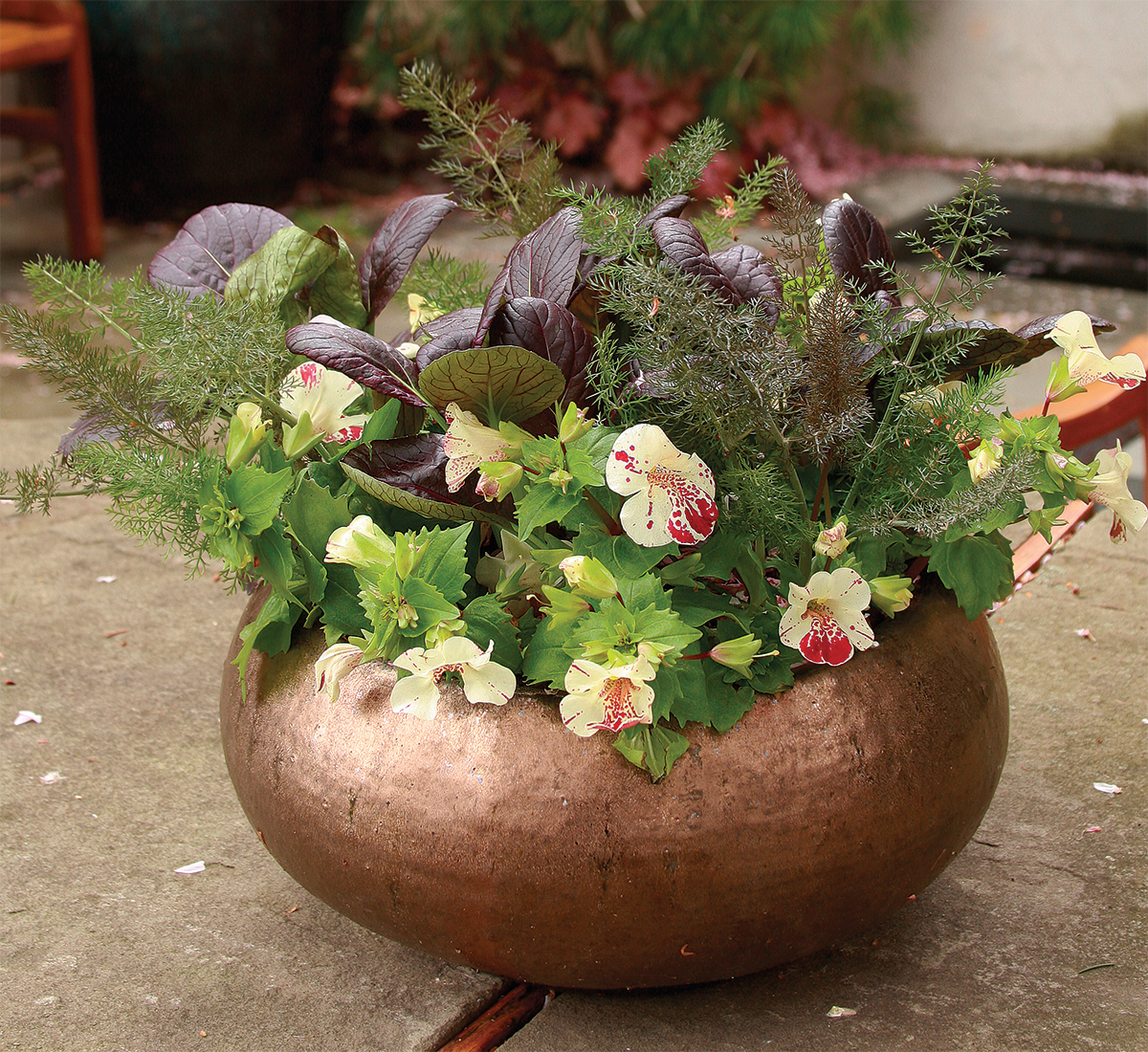
The challenge of creating spring containers is their short duration, but we all need a splash of spring in just the right spot. Bigger is better when selecting plants for spring, as plant growth during this season is usually slow and subtle. I rely heavily on cut branches and accenting with artificial flowering stems for impact until the smaller plants have time to settle in and start growing. I also encourage you to dedicate a few containers to four-season planting, incorporating plants with year-round appeal. Learn more about this technique here: 10 Plants for Year-Round Containers.
Find more ideas and inspiration for spring containers:
Discuss this article or ask gardening questions with a regional gardening expert on the Gardening Answers forum.
And for more Midwest regional reports, click here.
Marti Neely, FAPLD, owns and operates Marti Neely Design and Associates in Omaha, Nebraska.
Fine Gardening Recommended Products
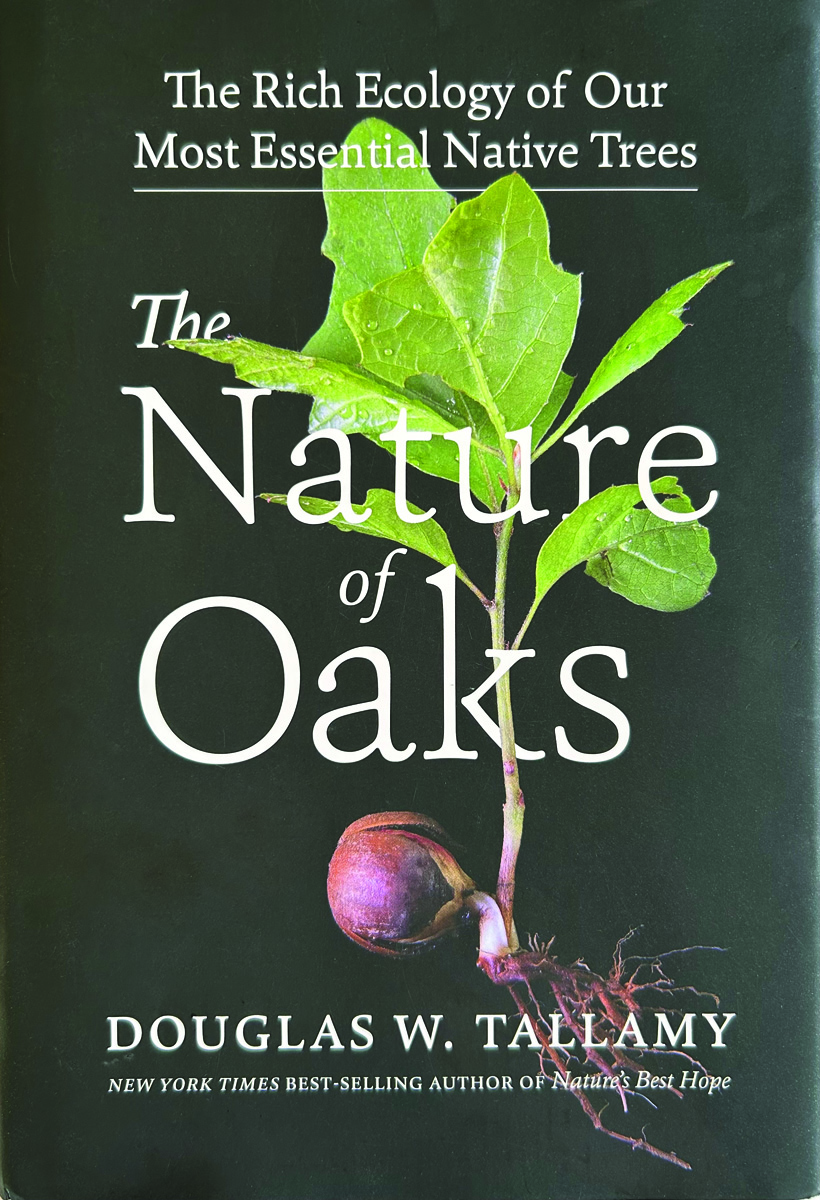
The Nature of Oaks: The Rich Ecology of Our Most Essential Native Trees
Fine Gardening receives a commission for items purchased through links on this site, including Amazon Associates and other affiliate advertising programs.
The Nature of Oaks reveals what is going on in oak trees month by month, highlighting the seasonal cycles of life, death, and renewal. From woodpeckers who collect and store hundreds of acorns for sustenance to the beauty of jewel caterpillars, Doug Tallamy illuminates and celebrates the wonders that occur right in our own backyards. He also shares practical advice about how to plant and care for an oak, along with information about the best oak species for your area.

Gardener’s Log Book from NYBG
Fine Gardening receives a commission for items purchased through links on this site, including Amazon Associates and other affiliate advertising programs.
This weatherproof five-year log book includes the following features:
· Sturdy waterproof cover to protect pages from rain and muddy soil
· Lined pages and gridded paper for plotting beds
· Five years of 12-month bloom and harvest grids for recording what you planted and when
· Authoritative appendices on composting, pruning, pest and disease control, and container gardening
· Useful reminders by season on fertilizing, mulching, and transplanting
· Space for listing your favorite sources and suppliers.
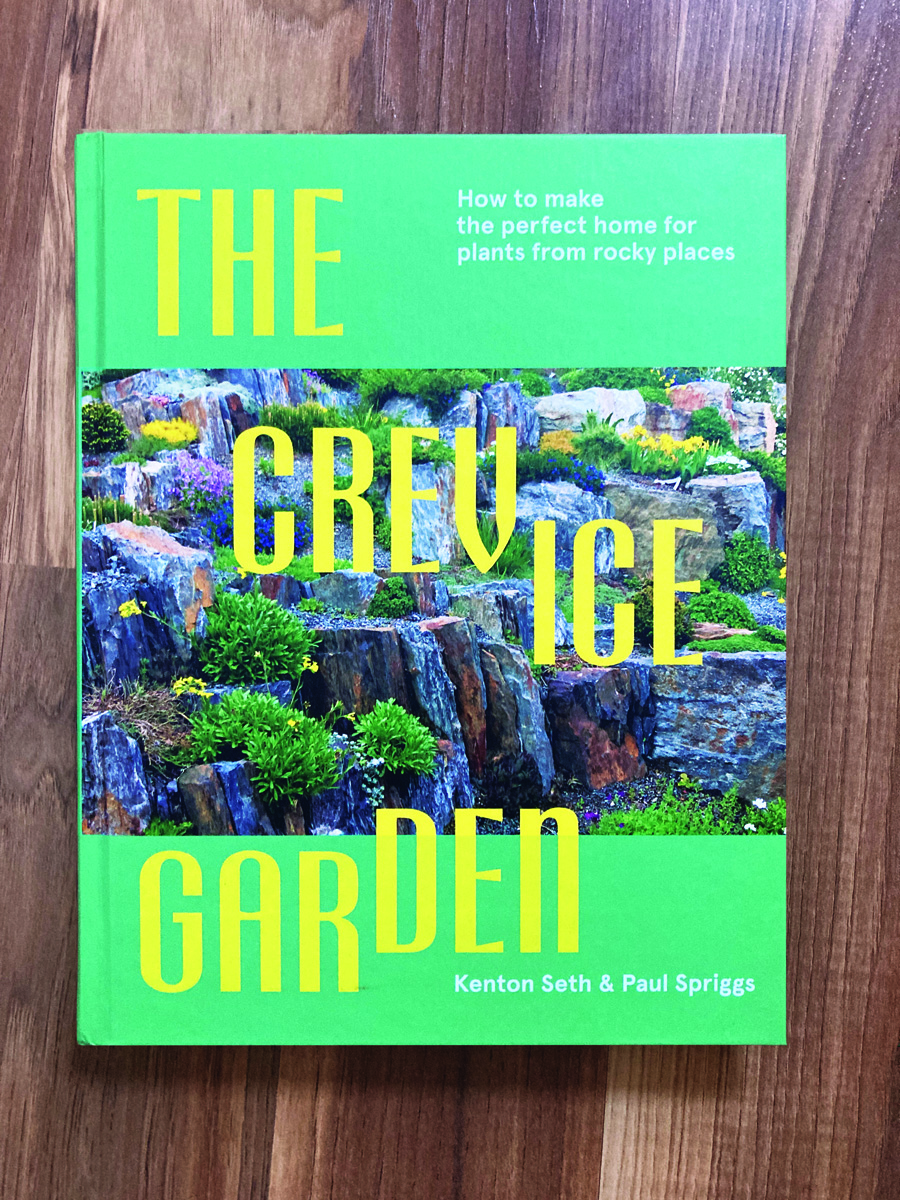
The Crevice Garden: How to make the perfect home for plants from rocky places
Fine Gardening receives a commission for items purchased through links on this site, including Amazon Associates and other affiliate advertising programs.
A crevice garden replicates the environmental conditions of mountain tops, deserts, coastlines, and other exposed or rocky places on earth. These striking garden features provide perfect conditions for the plants native to these far-off places, bringing the cultivation of these precious gems within everybody’s reach.








